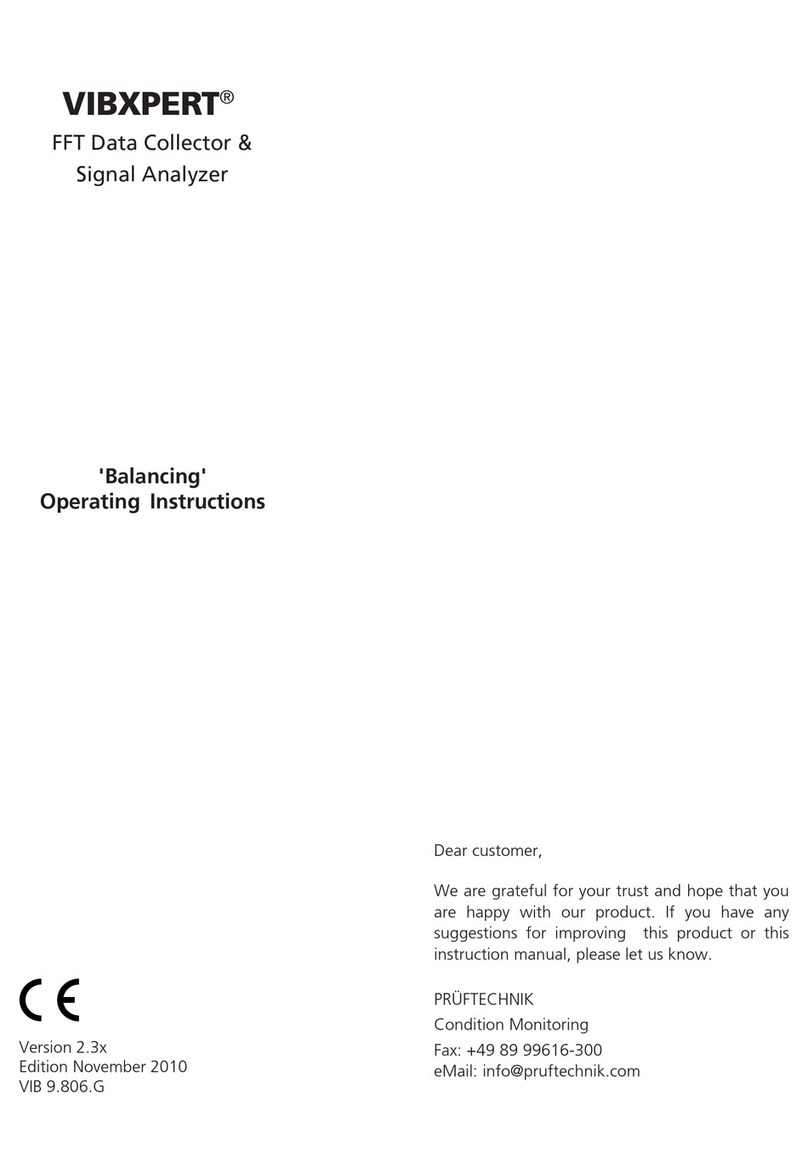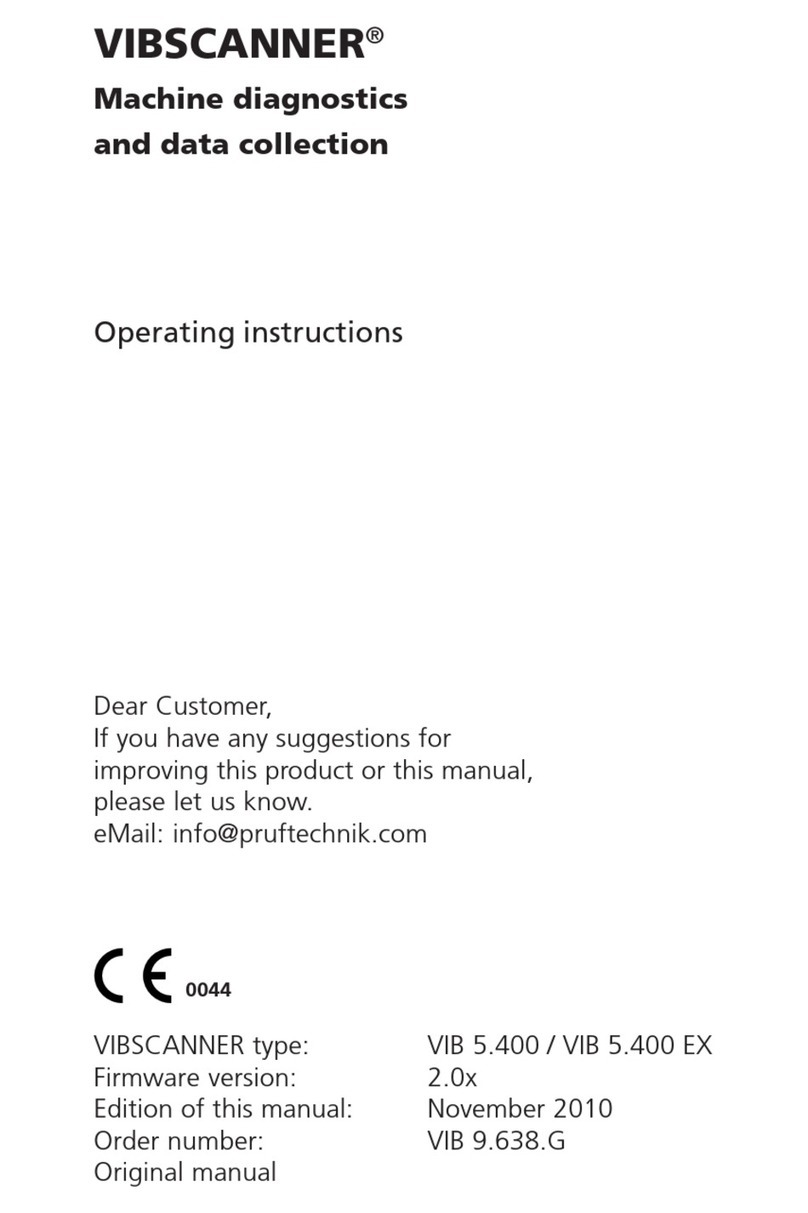
7
Ex-zone
If the cable ends are connected inside the Ex-
zone, the ignition protection type must not be
impaired with due consideration being given to
the intended use.
Prerequisites for safe operation of the signal anal-
ysis units and the sensors:
Responsibility
Each intrinsically safe company has an authorized
EX protection representative who is solely aware
which conditions, norms, etc. must be observed
in his company. Only the specialist personnel he
authorizes are allowed to work on the system.
The following installation recommendations must
be authorized by the EX protection representative:
Limiting device VIB 3.550
– The limiting device is to be installed in a switch
cabinet or housing (at least IP 20).
– The intrinsic connections for the limiting device
must be installed at a distance of at least 50 mm
from non-intrinsically safe circuits.
– Potential equalization (PA) is to be applied first
and must not be looped through.
– The signal analysis unit must be grounded with
potential equalization at the location of the lim-
iting device.
– The limiting device is the only grounded point of
the intrinsically safe circuit in the Ex-zone.
– Potential equalization is to be established be-
tween the limiting device and monitored ma-
chines.
Sensor
– Sensors of the series VIB 6.1xy DEX are electri-
cally insulated. Sensors and protective terminal
housings must be reliably protected against
physical contact. To do this, they must be fit-
ted with the IP68 option or with protective caps
beyond the insulated position and fixed with
clamp rings
Wiring to potential equalization
– A line resistance of <120 mOhm is recommend-
ed for interference protection reasons (=1.5
mm²/10 m).
– Due consideration is to be given to personnel,
goods, lightning, explosion protection - as well
as other protection types where appropriate -
for the respective customer, trade association,
insurer, state, federal government etc.
– In this regard, the relevant implementation pro-
visions are to be observed. This also applies to
provisions relating to the safety of the connec-
tion type. In accordance with these provisions,
wiring is only to be carried out by an approved
specialist who is insured for such purposes.
Connector cable
The following applies to coaxial cable:
– The shield is laid on the shield terminal of the
limiting device. PA and the shield terminal are
connected with each other.
– With regard to extension by means of a metallic
protective terminal housing, the shield must not
have any electrical contact with the housing.
The shield is to be electrically insulated.
– The metallic protective terminal housing is to be
protected against being touched by means of
heat-shrink tubing or grounding with PA.
The following applies to triaxial extension cable:
– The outer shield is laid on PA of the limiting de-
vice.
– With regard to extension by means of a metallic
protective terminal housing, the outer shield is
not laid on the protective terminal housing but
is reliably insulated. Alternatively, the metallic
housing can be insulated by means of heat-
shrink tubing.
– With regard to outward-facing cable interfaces,
the outer shield is insulated by means of heat-
shrink tubing or with an insulating cap.
Insulate shield!
Device side:
Connect outer
shield with PA!
VIB 3.550
coaxial
PA = Potential equalization
coaxial
coaxial triaxial
triaxial triaxial



































